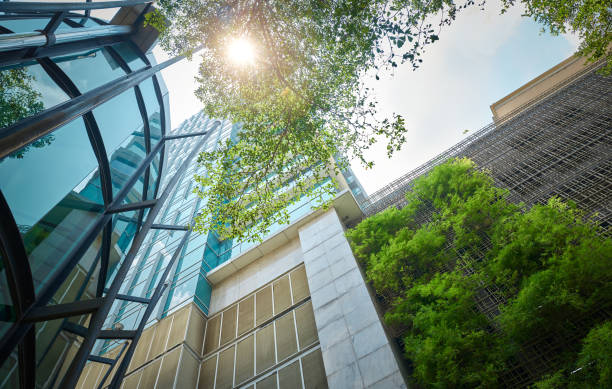
Principles of Sustainable Urban Design: Building Cities for Future Generations
In today’s rapidly urbanizing world, the principles of sustainable urban design are more crucial than ever. As more people flock to cities, the demand for resources and infrastructure strains our planet. This is where sustainable urban design comes into play, offering solutions that balance growth with environmental stewardship.
At the heart of sustainable urban design is the idea of creating cities that are not only livable but also resilient and adaptable to future challenges. Whether you’re a city planner, architect, or a home enthusiast, understanding these principles can help shape a better future for all.

Why Sustainable Urban Design Matters
The concept of sustainable urban design goes beyond mere aesthetics. It’s about creating spaces that are environmentally friendly, economically viable, and socially inclusive. With climate change posing significant threats, cities must adapt by integrating green practices into their development strategies.
Environmental Benefits
By incorporating green spaces and energy-efficient buildings, cities can reduce their carbon footprint and promote biodiversity. Implementing bioclimatic architecture can further enhance these efforts, ensuring buildings work harmoniously with the natural environment.
Social and Economic Impact
Sustainable urban design also focuses on creating inclusive communities. By promoting public transportation and pedestrian-friendly spaces, cities can improve accessibility and reduce inequality. This approach not only enhances quality of life but also boosts economic growth by attracting businesses and tourism.
Key Principles of Sustainable Urban Design
1. Integrated Planning
Effective urban design requires a holistic approach that considers transportation, housing, and land use. This ensures that all elements work together to create a cohesive and efficient urban environment.
2. Resource Efficiency
Minimizing resource consumption is a cornerstone of sustainable urban design. This includes using recycled materials in construction and promoting water and energy efficiency in buildings.
3. Green Infrastructure
Incorporating natural elements like parks, green roofs, and urban forests helps mitigate urban heat and improve air quality. These spaces also provide recreational opportunities and enhance urban biodiversity.
4. Sustainable Mobility
Encouraging public transportation, cycling, and walking reduces reliance on cars and lowers emissions. Cities can adopt strategies such as natural ventilation to further support sustainable mobility.
5. Community Engagement
Engaging local communities in the planning process ensures that urban development meets the needs of its residents. This participatory approach fosters a sense of ownership and responsibility among citizens.
Challenges in Implementing Sustainable Urban Design
While the benefits are clear, implementing sustainable urban design is not without challenges. High costs, regulatory hurdles, and resistance to change can impede progress. However, cities that prioritize sustainability can overcome these obstacles through innovation and collaboration.
Overcoming Financial Barriers
Investment in sustainable infrastructure can be costly, but long-term savings and environmental benefits often outweigh initial expenses. Public-private partnerships and government incentives can help finance these projects.
Navigating Regulatory Challenges
Urban planners must work within existing regulations, which can be restrictive. Advocating for policy changes and adopting flexible zoning laws can facilitate sustainable development.
The Future of Sustainable Urban Design
As technology advances, cities have more tools at their disposal to implement sustainable urban design. From smart grids to eco-friendly construction materials, innovations are paving the way for greener cities. Embracing these technologies will be key to creating urban environments that are both resilient and sustainable.
The Role of Technology
Technological advancements like the Internet of Things (IoT) and artificial intelligence can optimize urban systems, improving efficiency and reducing waste. These tools enable cities to monitor and manage resources more effectively.
Adapting to Climate Change
With climate change impacts becoming more severe, cities must adapt by enhancing their resilience. Implementing cold-climate architecture strategies can help cities withstand extreme weather conditions.
Conclusion
In conclusion, the principles of sustainable urban design are essential for building cities that support both people and the planet. By prioritizing environmental, social, and economic factors, urban areas can become more livable and resilient. As we look to the future, embracing these principles will be vital for creating sustainable and thriving communities.

FAQ
What is sustainable urban design?
Sustainable urban design focuses on creating urban environments that are environmentally friendly, economically viable, and socially inclusive. It aims to balance growth with environmental stewardship and improve the quality of life for city residents.
How does sustainable urban design benefit cities?
By integrating green practices, cities can reduce their carbon footprint, promote biodiversity, and improve air quality. Sustainable urban design also enhances accessibility, reduces inequality, and boosts economic growth.
What are some challenges in implementing sustainable urban design?
Challenges include high costs, regulatory hurdles, and resistance to change. Overcoming these obstacles requires innovation, collaboration, and a commitment to sustainability.
For more information, you can visit Global Goals to learn more about sustainable cities and communities.
This article contains affiliate links. We may earn a commission at no extra cost to you.